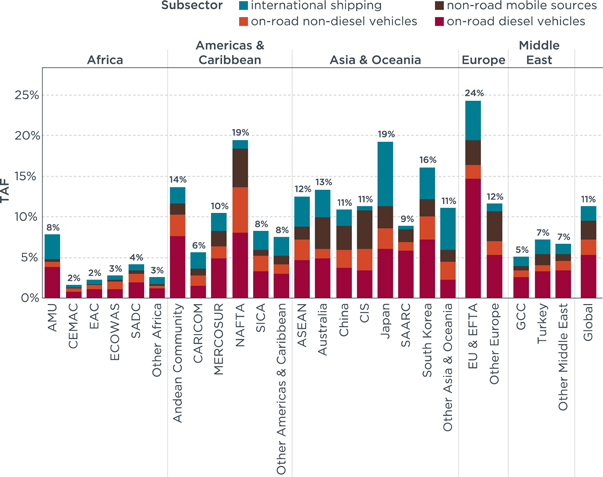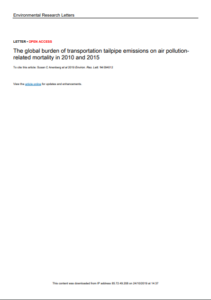According to a study, a significant share of premature deaths due to air pollution can be attributed to shipping, in particular in Europe, Japan and Oceania; The study highlights the urgency of setting regulations in reducing shipping emissions.
The study “The global burden of transportation tailpipe emissions on air pollution-related mortality in 2010 and 2015” was launched in September 6, by Susan C Anenberg, Joshua Miller, Daven K Henze, Ray Minjares and Pattanun Achakulwisut.
Specifically, the transportation sector plays a crucial role in air pollution; Thus, the study ran a research to quantify the contribution of tailpipe emissions of transportation to the global disease burden.
The researchers highlight that previous studies have already noted that tailpipe emissions from transportation sources, including on-road vehicles, shipping, and other non-road mobile sources, impose vital public health damages, particularly in world regions where large populations are co-located with high transportation activity levels and/or lax emission regulations.
Following the results, the researchers examined each transportation subsector individually; As a result, emissions from on-road diesel vehicles, international shipping, and non-road mobile sources contributed 82% to the total TAF ( transportation attributable fraction) globally.
Additionally, shipping and non-road mobile sources were relatively minor contributors to ozone TAFs but together made up more than half of the total combined PM2.5 and ozone TAF in Australia, Japan, and CARICOM region, and more than one-third of the total TAF globally.

The study showed that reducing emissions from all transportation sectors has to be a top priority nowadays.
Since the timeframe for our analysis is 2010 and 2015, it does not capture the projected changes in transportation emissions impacts from factors in more recent years, including the adoption and continued implementation of world-class standards, declining diesel market shares among LDVs in Europe and India, and growing uptake of vehicles with zero-tailpipe emissions.
Therefore, in the future researchers will continue monitoring the changes in health impacts associated with transportation-sector emissions associated with these policies.
Given that the shipping sector poses great threats not only to the environment but to human health too, the industry is now implementing new regulations to boost protection as the 2020 sulphur cap regulation and the Paris Agreement goals.
To explore more, click on the PDF herebelow































































